C Frame Power Press
Product Details:
- Application Metal bending and forming
- Operating Pressure Depends on operation
- Power Source Electric
- Mounting Type Other
- Accessories Standard accessories
- Efficiency High
- Features Heavy-duty structure precision bending
- Click to View more
C Frame Power Press Price And Quantity
- 1 Unit
- 200000.0 INR/Piece
C Frame Power Press Product Specifications
- O, t, r, h, e
- High
- Electric
- Standard accessories
- Customizable speed settings
- Heavy-duty structure precision bending
- Other
- Metal bending and forming
- Vertical frame structure
- 1 year manufacturer warranty
- Other
- 415V (3-phase)
- Depends on operation
C Frame Power Press Trade Information
- Delhi
- Cash in Advance (CID), Cash Advance (CA)
- 5 Unit Per Month
- 15 Days
- Yes
- Sample costs shipping and taxes has to be paid by the buyer
- Asia
- All India
- ISO 9001:2015
Product Description
A C-Frame power press, also commonly known as a gap-frame press, is a widely used industrial machine in metal fabrication and other manufacturing processes. Its distinctive name comes from the "C" shape of its frame, which provides unique advantages in terms of accessibility and versatility.
Here's a detailed description:
Core Function: The primary function of a C-frame power press is to apply significant force (tonnage) to deform, cut, or shape materials, typically metal sheets or components, using specialized tooling (punches and dies). It can perform a wide array of operations.
Key Components and Their Function:
-
C-Shaped Frame: This is the most defining feature. The frame is a rigid, often welded steel structure designed to withstand the immense forces generated during operation. The open "gap" in the C allows for excellent access to the working area from three sides (front, left, and right).
-
Ram (or Slide): This is the movable component that descends to exert force on the workpiece. The punch or upper die is attached to the ram.
-
Bed (or Bolster Plate): A sturdy, stationary platform located at the bottom of the C-frame where the lower die is mounted. The workpiece is placed on the bed.
-
Power Source (Actuation Mechanism): C-frame presses can be powered in several ways:
-
Mechanical Presses: These are very common. They utilize an electric motor, a flywheel to store kinetic energy, a clutch to engage/disengage power, a crankshaft, and connecting rods (pitmans) to convert rotational motion into the linear up-and-down motion of the ram. They are known for speed and consistent stroke.
-
Hydraulic Presses: These use a hydraulic power unit (pump, reservoir, cylinders) to generate pressure through hydraulic fluid, which then moves the ram. They offer precise control over force, speed, and stroke length, and are suitable for a wider range of materials and complex forming.
-
Pneumatic Presses: These use compressed air to actuate the ram. They are generally used for lighter applications and are known for their simplicity and speed in repetitive tasks with lower force requirements.
-
-
Clutch & Brake System (for Mechanical Presses): The clutch engages the flywheel to the crankshaft to start the ram's movement, and the brake stops it precisely at the end of a cycle.
-
Control Panel: Allows the operator to set various parameters like stroke length, speed (for hydraulic presses), and to initiate/stop the press cycle. Modern presses may feature sophisticated PLC or CNC controls for automation and complex operations.
-
Safety Features: Given the inherent power, safety is paramount. C-frame presses often include safety light curtains, two-hand controls, emergency stop buttons, and mechanical guarding to protect the operator.
Working Principle:
-
Tooling Setup: The appropriate upper die (punch) is attached to the ram, and the lower die is secured to the bed.
-
Material Placement: The workpiece (e.g., sheet metal blank) is placed on the lower die.
-
Initiation: The operator initiates the press cycle (often via a foot pedal or two-hand push buttons for safety).
-
Ram Descent: The power source drives the ram downwards.
-
In a mechanical press, the flywheel's energy is transferred through the crankshaft, pushing the ram down.
-
In a hydraulic press, hydraulic fluid is pumped into the cylinder, extending the ram.
-
-
Forming/Cutting: As the ram and upper die descend, they contact the workpiece, applying the necessary force to cut, bend, punch, or form it according to the die's shape.
-
Ram Return: After the operation, the ram retracts to its original upper position, allowing the finished part to be removed and a new workpiece to be loaded for the next cycle.
Common Applications:
C-frame power presses are incredibly versatile and are used for a vast range of operations, including:
-
Punching: Creating holes of various shapes and sizes.
-
Blanking: Cutting out a complete part from a larger sheet.
-
Bending: Forming angles and curves in sheet metal.
-
Forming: Changing the shape of metal without removing material.
-
Drawing: Pulling metal through a die to create deeper, often hollow, shapes.
-
Coining: Applying high pressure to create precise, often intricate, raised or indented designs.
-
Embossing: Creating raised or recessed patterns on a material's surface.
-
Trimming: Cutting excess material from a previously formed part.
-
Assembly: Press-fitting components together.
Advantages of C-Frame Design:
-
Excellent Accessibility: The open C-frame design provides easy access to the die area from three sides, simplifying die setup, maintenance, material loading/unloading (both manual and automated), and scrap removal.
-
Compact Footprint: Generally requires less floor space compared to other press types like H-frame (straight-side) presses.
-
Cost-Effective: Often more economical than H-frame presses, making them a popular choice for many workshops and manufacturing lines.
-
Versatility: Capable of performing a wide range of operations with appropriate tooling.
-
Ease of Automation Integration: The open design facilitates integration with robotic loading/unloading systems.
Limitations:
-
Deflection: Due to the open "C" shape, C-frame presses can exhibit more frame deflection (bending or stretching) under heavy loads compared to the more rigid H-frame (straight-side) presses. This can impact precision, especially for very high-tonnage or deep-draw applications.
-
Tonnage Capacity: While versatile, they are typically suited for light to medium-duty applications and lower tonnage ranges (e.g., 1 to 250 tons, though variations exist). For extremely high tonnage or applications requiring superior rigidity, H-frame presses are usually preferred.
In summary, a C-frame power press is a workhorse in the metal fabrication industry, highly valued for its accessibility, versatility, and efficiency in a broad spectrum of forming and cutting operations.

Price:
- 50
- 100
- 200
- 250
- 500
- 1000+
 CAll Us :-
CAll Us :-  keshaventerprises89@yahoo.com
keshaventerprises89@yahoo.com

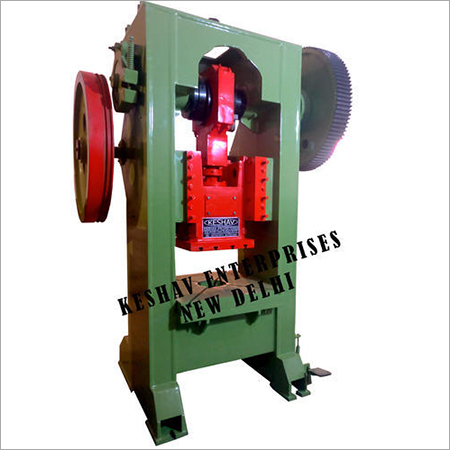
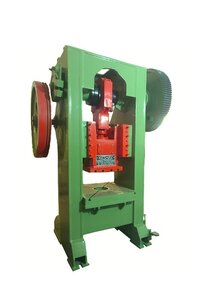
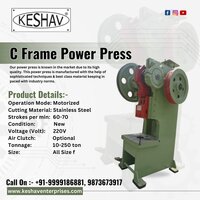
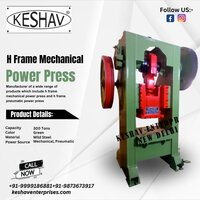
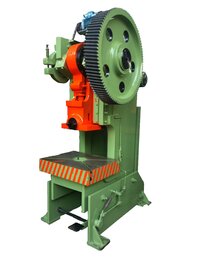
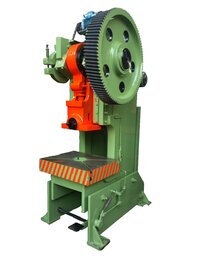
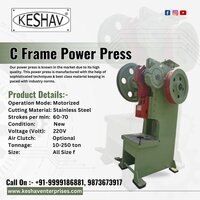
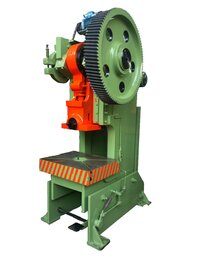
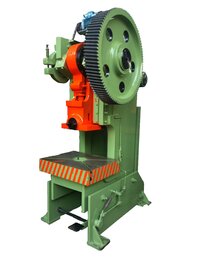
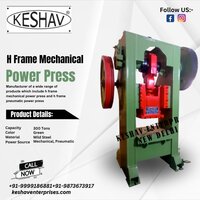
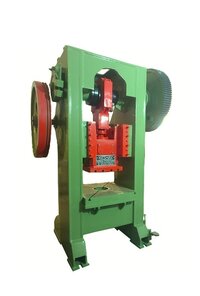
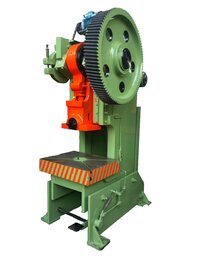
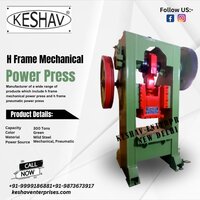
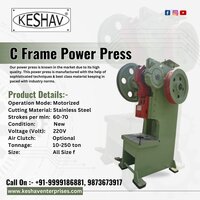
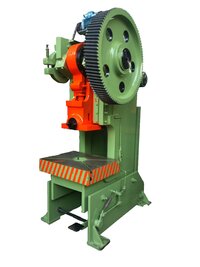
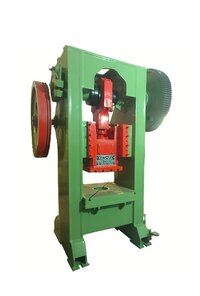
















 Send Inquiry
Send Inquiry Send SMS
Send SMS Call Me Free
Call Me Free

